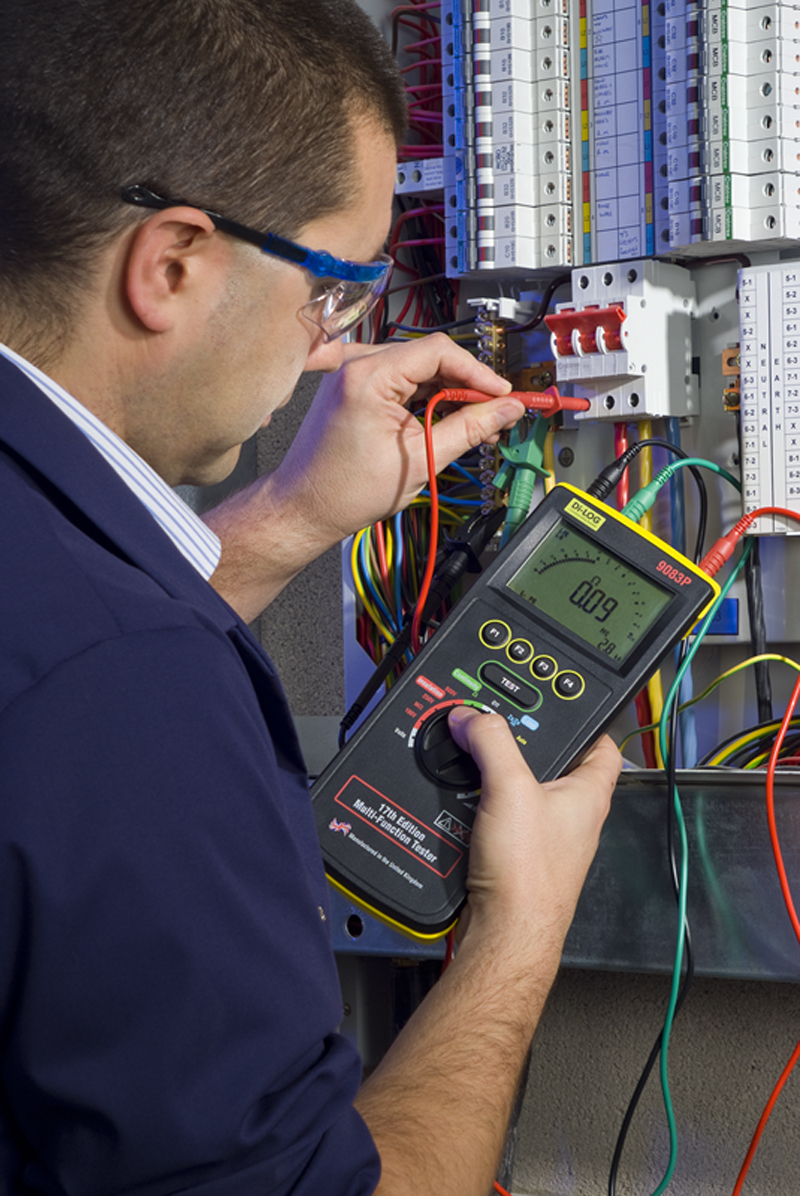
Manufacturers are constantly striving to enhance the versatility and convenience of multifunction testers. Ash Mohammed from Di-Log identifies some key things to look out for when investing in a new device.
I recall writing a piece a few years ago extolling the virtues of single-function testers as opposed to multifunction testers, which were just making appearance on the market. The main arguments at that time being that MFTs were relatively more expensive, and if the MFTs developed a fault then all three functions (loop, insulation and RCD) would be lost.
However, the last few years have seen the prices of MFTs reduce considerably as manufactures have ramped up volumes. Now a basic MFT, with all the test functions required for 17th Edition testing, is the same price that a single-function tester was five years ago. Current testers are also better protected and are far more reliable.
Market trends
Take a look at the data sheets for the current crop of multifunction installation tester being offered to contractors and several trends are quickly apparent.
In general the testers are getting smaller, with some manufacturers now offering products that are described as handheld (even though it is still more convenient to use the tester with a neck harness to take the strain).
Another common trend is to add more functionality, with features such as phase rotation testing and facilities for testing three phase RCDs.
These features are not necessary for everyday installation testing, however they are useful for contractors to have available should they be required to test three-phase installations.
Extras related to the growing importance of green energy resources are also appearing on the latest testers. These include facilities for testing type B RCDs which, unlike type A devices, provide protection against smooth DC leakage currents that may be encountered in solar panel (PV) installations. Some instruments also offer options for measuring the resistance of the earth electrodes that are often needed as micro generation systems.
“In general the testers are getting smaller, with some manufacturers now offering products that are described as handheld (even though it is still more convenient to use the tester with a neck harness to take the strain).”
Another interesting development is the inclusion of power analysis functions. This means that the instrument can be used to provide simple power consumption estimates and check the accuracy of kWh meters. It can also be used to assess harmonics, which is again an increasingly common requirement.
Convenience and ease of use have also been addressed in the latest models, with the addition of features like automatic testing for RCDs, automatic display of max loop impedance and R1 + R2 values for circuit verification and non-trip loop testing.
Another feature that can save a lot of time is two-wire loop testing as this allows easy testing of radial circuits where it can be difficult or even impossible to connect a three-wire loop tester.
Dual displays for results are increasingly being offered. Depending on the instrument manufacturer, these are typically used to display two results – such as PEFC/PSC and loop impedance – simultaneously. Or to show a secondary test parameter along with the main test result such as the test voltage along with the insulation resistance when an insulation test is being performed.
Off course carrying out the tests is only part of the process of certifying an electrical  installation. It’s also necessary to record the test results and produce the test certificates. Instrument manufacturers have taken measures to make these steps easier, and now there are higher end testers which offer the facility for storing results internally. These stored results can usually be uploaded to a computer to generate completed test certificates more or less automatically. Some manufacturers have taken this a step further by offering Bluetooth connectivity, which means test results can be downloaded to a computer, a laptop or even a smartphone/tablet, without the need for physical connection.
installation. It’s also necessary to record the test results and produce the test certificates. Instrument manufacturers have taken measures to make these steps easier, and now there are higher end testers which offer the facility for storing results internally. These stored results can usually be uploaded to a computer to generate completed test certificates more or less automatically. Some manufacturers have taken this a step further by offering Bluetooth connectivity, which means test results can be downloaded to a computer, a laptop or even a smartphone/tablet, without the need for physical connection.
It easy to see that MFTs are evolving rapidly and that the latest models have a lot to offer. All of the above should be considered when purchasing your next MFT. You will hopefully have the tester for a number of years, so one last thing to look out for is the technical support available. Choose a make and model from a manufacturer that can offer immediate support on an ongoing basis.








